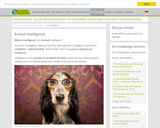
Are animals intelligent? What is intelligence? How can you tell, whether animals are intelligent?
- Subject:
- Education
- Elementary Education
- Life Science
- Zoology
- Material Type:
- Primary Source
- Date Added:
- 09/10/2018

Are animals intelligent? What is intelligence? How can you tell, whether animals are intelligent?

This book is part of the college course BUS 104 Business Communication currently offered at Saddleback College in Mission Viejo, CA and taught by Dr. Scot Trodick. This book can be viewed along with original business communication content and activities which can be accessed by enrolling in BUS 104 Business Communication offered at Saddleback College in Mission Viejo, CA and taught by Dr. Scot Trodick. Material from this course is not included in this open educational resource. Enrolling in the course BUS 104 Business Communication at Saddleback College will provide full access to all materials and activities or the content can be obtained directly from Bishop Publishing.

Business CommunicationsCourse DescriptionSolving business problems through effective oral and written communications. Letter forms and methods of writing business Creating functional letters related to inquiry response, good will, sales, credit, and adjustment and collection. Pre/Co-requisite: ENG 102. General Education: Options. Special Requirement: Intensive Writing/Critical Inquiry. Three lecture.Course GoalsTo provide students with communication skills for the workplace necessary to generate and organize ideas, draft and revise various business and technical documents.

A series of Poweroint presentations dealing with guidelines on how to acquire research and organisational skills for first-year undergraduate level essays and presentations in the History of Art

This course introduces undergraduate planning students to the role of the planner in researching issues in cities both in the United States and abroad. This course is a practical, hands-on workshop that challenges students to research, write and present their ideas on two different cities: A U.S. City (preferably somewhere close) and Copenhagen. Students will be equipped to:
select and research a thesis topic,
work professionally with faculty and other experts on the topic of their choice, and
research, write and present.

Course information and map for first-year, in-person, 10-week class on public speaking and communication skills in delivering speeches and presentations. Includes learning objectives, assignments, readings, and other resources.

Course map for class that emphasizes developing communication skills by examining and demonstrating how self-awareness, audience, content, and occasion influence the creation and delivery of speeches and presentations. Includes learning objectives, assignments, formative feedback, learning activities, and readings as well as other resources.
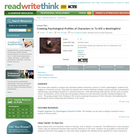
Students explore the motivation behind characters' actions in "To Kill A Mockingbird" by creating psychological profiles for characters from the novel.
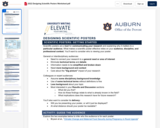
Scientific posters are a tool for communicating your researchand explaining why it matters to a particular audience. What makes a scientific poster effective relies on your audience, discipline, and professional context. You’ll want to consider who is viewing your poster.
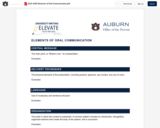
This brief handout outlines elements of oral communication .

The 12th grade learning experience consists of 7 mostly month-long units aligned to the Common Core State Standards, with available course material for teachers and students easily accessible online. Over the course of the year there is a steady progression in text complexity levels, sophistication of writing tasks, speaking and listening activities, and increased opportunities for independent and collaborative work. Rubrics and student models accompany many writing assignments.Throughout the 12th grade year, in addition to the Common Read texts that the whole class reads together, students each select an Independent Reading book and engage with peers in group Book Talks. Language study is embedded in every 12th grade unit as students use annotation to closely review aspects of each text. Teacher resources provide additional materials to support each unit.

Who decides who among us is civilized? What rules should govern immigration into the United States? Whom should we let in? Keep out? What should we do about political refugees or children without papers? What if they would be a drain on our economy?
ACCOMPLISHMENTS
Students read William Shakespeare’s play The Tempest and write a short argument about who in the play is truly civilized.
Students participate in a mock trial in which they argue for or against granting asylum to a teenage refugee, and then they write arguments in favor of granting asylum to one refugee and against granting it to another.
Students read an Independent Reading text and write an informational essay about a global issue and how that relates to their book.
GUIDING QUESTIONS
These questions are a guide to stimulate thinking, discussion, and writing on the themes and ideas in the unit. For complete and thoughtful answers and for meaningful discussions, students must use evidence based on careful reading of the texts.
What role do national identity, custom, religion, and other locally held beliefs play in a world increasingly characterized by globalization?
How does Shakespeare’s view of human rights compare with that in the Universal Declaration of Human Rights?
Who is civilized? Who decides what civilization is or how it’s defined?
How do we behave toward and acknowledge those whose culture is different from our own?
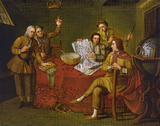
What is the U.S. policy on immigration, especially for refugees? In this lesson, students will share responses on current issues in immigration. Then, as a class, they’ll jigsaw a fact sheet about immigration policy. They’ll get instructions about the Granting Refuge Activity.

Is immigration reform necessary? In this lesson, students will revise their narratives for sentence variety and proofread them. They’ll read Emma Lazarus’s poem “The New Colossus” and discuss what the poem says about immigrants. They’ll write about current issues regarding immigration.
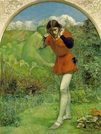
In this lesson, students will be assigned a role for the Granting Refuge Activity. They’ll meet in groups to research, develop strategies, and plan how to argue for granting asylum or denying it.

This project unit—a multimedia self-portrait published in digital form—is the capstone of your students' high school careers. It is a chance for them to pause and reflect on where they've been, where they're going, and who they are as a person. Students will reflect on what they want others to know about them: what they want their message to be and what types of media they might use to convey that message. Students will have the opportunity to express themselves in many different formats—through writing, of course, but also through other media of their choosing. Students will be able to convey your message through visual art, photography, a graphic novel, audio, poetry, or video—practically any type of media they want!
ACCOMPLISHMENTS
Students will complete a multimedia self-portrait, capturing important aspects of the essence of themselves.
Students will contribute one chapter from their multimedia self-portrait to a class anthology.
Students will present one chapter from their multimedia self-portrait to the class.
GUIDING QUESTIONS
These questions are a guide to stimulate thinking, discussion, and writing on the themes and ideas in the unit. For complete and thoughtful answers and for meaningful discussions, students must use evidence based on careful reading of the texts.
How is late adolescence a moment of internal and external change?
What are the most important qualities of your character—past, present, and future?
How can you portray these key aspects of yourself using multimedia?
BENCHMARK ASSESSMENT: Cold Read
During this unit, on a day of your choosing, we recommend you administer a Cold Read to assess students’ reading comprehension. For this assessment, students read a text they have never seen before and then respond to multiple-choice and constructed-response questions. The assessment is not included in this course materials.

How will students explain their work? What do they want their audience to know about their creative process? They’ll look at examples of Artist’s Statements and start to plan their own statement. With the class, they’ll create a checklist of requirements for writing an Artist’s Statement.

The learner will gain a working knowledge of Google Slides and be able to create effective presentations. The lesson plan also applies the following Universal Design for Learning (UDL) strategies: Engagement, Representation, Action & Expression
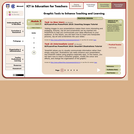
A unit of study for learners to consolidate their PowerPoint skills and provide them with opportunities to learn how to insert graphic elements into their presentations. The objective is to learn how to integrate graphic elements into their presentations.

How we design professional development greatly impacts outcomes. This module addresses the incorporation of critical thinking and critical reflection skills into professional development sessions, with sections on cultural competency, incorporating participant self-assessment at the end of sessions using rubrics, and instructional design considerations when developing in-person sessions or online learning. It is intended to give an entry into these topics for anyone providing training in any setting.